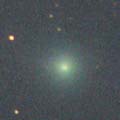
|
Although it was reported so faint as 17 mag at the discovery, it was actually much brighter as 14 mag (Aug. 21, Terry Lovejoy). Then it kept brightening rapidly and it reached up to 8.0-8.5 mag on Nov. 26 (Michael Jager and Gerald Rhemann). However, it is already impossible to observe. It will pass only 0.17 A.U. from the sun in mid January, and reach to 1 mag. But it is not observable at that time. In the Southern Hemisphere, it appears at 3.5-4 mag in late January, then it keeps observable while fading gradually. In the Northern Hemisphere, it will never be observable again.
Date(TT) R.A. (2000) Decl. Delta r Elong. m1 Best Time(A, h)
Dec. 9 17 38.29 -11 13.4 1.954 1.029 14 7.0 20:50 ( 58,-21)
Dec. 16 17 53.05 -10 19.7 1.794 0.871 13 6.5 20:56 ( 56,-25)
|
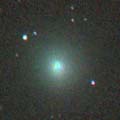
|
It had not been observed for a long time since June. In October, after it appeared again in the morning sky, it brightened very rapidly from 13 mag up to 10 mag. Now it is 9.1 mag (Nov. 26, Juan Jose Gonzalez). It will be at opposition in December and it is coming closer to the earth. So it will keep visible visually at 9-10 mag for a while until December. Bright and large, but weakly condensed. It keeps observable in excellent condition in the Northern Hemisphere. It will fade out rapidly after January.
Date(TT) R.A. (2000) Decl. Delta r Elong. m1 Best Time(A, h)
Dec. 9 7 24.64 43 58.4 0.738 1.640 143 8.8 2:19 (180, 11)
Dec. 16 5 44.60 51 19.2 0.752 1.685 151 9.0 0:14 (180, 4)
|
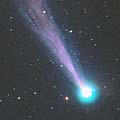
|
After it kept 5.5-6.0 mag from early October to mid October, it suddenly brightened in outburst on Oct. 24, and reached up to 4.2 mag on Oct. 25 (Maik Meyer). It became easily visible with naked eyes, and a very long tail of 5 degrees was visible with binoculars. But now it is fading, and it has already faded down to 8.5 mag (Nov. 30, Toni Scarmato). In the Northern Hemisphere, it keeps observable in the evening sky until early January while fading gradually after this. In the Southern Hemisphere, it cannot be observable until next April when it becomes fainter than 15 mag.
Date(TT) R.A. (2000) Decl. Delta r Elong. m1 Best Time(A, h)
Dec. 9 20 13.92 2 29.8 1.869 1.502 53 9.4 20:50 ( 94, 1)
Dec. 16 20 29.99 0 11.3 2.061 1.598 48 10.0 20:56 ( 89, -1)
|
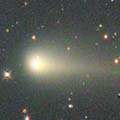
|
Now it reached to the maximum brightness at 9.8 mag (Nov. 25, Juan Jose Gonzalez). Strongly condensed and easy to see. It keeps 9-10 mag until December, and observable in its best condition. It keeps observable after that until May when it fades down to 16 mag. It will be visible visually for a long time until around March.
Date(TT) R.A. (2000) Decl. Delta r Elong. m1 Best Time(A, h)
Dec. 9 2 21.68 2 2.3 0.831 1.684 135 10.0 21:10 (180, 53)
Dec. 16 2 27.93 2 14.3 0.881 1.695 130 10.2 20:56 (177, 53)
|
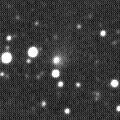
|
Because it had been locating low in the evening sky since its discovery in June, a few observations have been reported. CCD observers reported as 14 mag, but it was reported much brighter visually as 11.5 mag (Oct. 14, Juan Jose Gonzalez). It was too low in the evening to observe in October and November. But it will be getting higher in the morning sky after December. Then it keeps 13 mag until March and visible visually for a long time.
Date(TT) R.A. (2000) Decl. Delta r Elong. m1 Best Time(A, h)
Dec. 9 16 18.87 18 36.2 2.616 2.007 42 12.6 2:53 (273,-38)
Dec. 16 16 31.14 21 15.2 2.557 2.018 47 12.6 2:53 (268,-36)
|

|
In this year, it has been bright as 12-13 mag and visible visually since it appeared in the morning sky in early July. After it reached up to 11.5 mag in outburst in mid October, it kept bright at 12 mag. Now it is still bright as 12.4 mag (Nov. 24, Yoshimi Nagai). It keeps observable in good condition until March.
Date(TT) R.A. (2000) Decl. Delta r Elong. m1 Best Time(A, h)
Dec. 9 3 56.63 30 59.6 4.912 5.862 163 13.2 22:44 (180, 24)
Dec. 16 3 53.22 30 43.5 4.947 5.864 156 13.2 22:13 (180, 24)
|
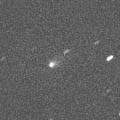
|
It had been unobservble for a long time. When it appeared again in the morning sky, it has showed a cometary activity and it has become much brighter than expected. Now it is also visible visually at 13.7 mag (Oct. 31, Seiichi Yoshida). It keeps 13-14 mag until March. It is observable in good condition in the Southern Hemisphere. However, in the Northern Hemisphere, it rises only up to 20 degree in November, then it moves southwards and is only observable until December.
Date(TT) R.A. (2000) Decl. Delta r Elong. m1 Best Time(A, h)
Dec. 9 12 21.98 -33 10.0 2.263 1.993 61 13.7 2:53 (288, 37)
Dec. 16 12 36.83 -36 48.3 2.221 1.995 63 13.6 2:53 (291, 41)
|
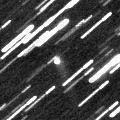
|
Now it is 15.1 mag (Nov. 21, Mitsunori Tsumura). Almost asteroidal. It did not brighten at all since early September. Although the slight cometary activity was detected in late July, it became completely stellar soon. Its tail became visible again in late October, however, now it is stellar. In the Northern Hemisphere, it keeps good condition after this. It keeps locating high until next spring. If it keeps asteroidal after this, it will be 14 mag at best. It may suddenly become active and brighten rapidly someday. But actually, it is getting a bit fainter than this ephemeris recently.
Date(TT) R.A. (2000) Decl. Delta r Elong. m1 Best Time(A, h)
Dec. 9 21 21.96 37 27.7 0.885 1.274 85 14.0 20:50 (131, -7)
Dec. 16 21 40.90 39 16.8 0.859 1.251 85 14.0 20:56 (131,-11)
|
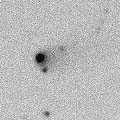
|
It has been visible at 13.5 mag for a long time since last autumn until spring. Now it is 15.3 mag (Nov. 17, Ken-ichi Kadota). It keeps observable in excellent condition until April. Although it is fainter than last year by 1 mag, it will be visible visually at 14 mag.
Date(TT) R.A. (2000) Decl. Delta r Elong. m1 Best Time(A, h)
Dec. 9 12 56.28 22 18.9 5.676 5.501 74 14.4 2:53 (242, 0)
Dec. 16 13 0.33 22 9.9 5.598 5.519 80 14.4 2:53 (239, 4)
|
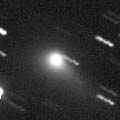
|
It had been observed at 10 mag in the evening sky from winter to spring. Now it is fading. But it is still visible visually at 14.2 mag (Oct. 31, Seiichi Yoshida).
Date(TT) R.A. (2000) Decl. Delta r Elong. m1 Best Time(A, h)
Dec. 9 10 7.22 24 8.6 3.389 3.853 110 14.9 2:53 (211, 24)
Dec. 16 10 6.16 24 20.6 3.359 3.921 118 15.0 2:53 (204, 26)
|

|
Recovered after 15 year blank. The condition is good in this return. It was expected to reach to 13.5 mag in November. But actually, it is fainter than expected. Now it is 15.4 mag (Nov. 25, Ken-ichi Kadota). Because it is very diffuse, CCD observers report it very faint. However, if the sky condition is excellent, it will be visible visually at 14 mag. It is getting higher gradually after this also in the Northern Hemisphere. By the way, it was reported as 12 mag in mid November, but it seems to be confused by nearby faint galaxies.
Date(TT) R.A. (2000) Decl. Delta r Elong. m1 Best Time(A, h)
Dec. 9 22 17.38 -15 7.6 0.910 1.143 74 15.1 20:50 ( 97, 36)
Dec. 16 22 44.25 -9 43.3 0.923 1.163 75 15.4 20:56 (102, 32)
|

|
It is observable in good condition in the Southern Hemisphere. But it is not observable until January in the Northern Hemisphere. It was discovered at 17.5 mag in May. Then it has not been brightening well. It is 16.5-17 mag still in November. It will be observable also in the Northern Hemisphere in the evening low sky from January to March, however, it will be fainter than 15 mag.
Date(TT) R.A. (2000) Decl. Delta r Elong. m1 Best Time(A, h)
Dec. 9 4 17.50 -63 35.2 2.461 2.701 93 15.3 23:02 ( 0, 62)
Dec. 16 3 47.69 -60 52.9 2.433 2.674 93 15.2 22:05 ( 0, 64)
|
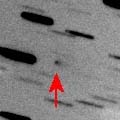
|
It was expected to reach to 13 mag in winter. But actually, it is 15.8 mag (Nov. 21, Mitsunori Tsumura), much fainter than expected. It will be observable in an excellent condition in November and December. However, it reached only to 15.5 mag at best in fact.
Date(TT) R.A. (2000) Decl. Delta r Elong. m1 Best Time(A, h)
Dec. 9 8 12.91 32 59.7 0.748 1.615 136 15.3 2:53 (182, 22)
Dec. 16 8 17.12 38 0.5 0.731 1.624 142 15.3 2:40 (180, 17)
|

|
First return of a new bright periodic comet observed at 9 mag in 2001. But it has not been recovered yet. The condition of this apparition is bad. It keeps locating very low in the evening. But it is expected to reach up to 11 mag in February and March. It should be already so bright as 16 mag. But it may be much fainter in fact.
Date(TT) R.A. (2000) Decl. Delta r Elong. m1 Best Time(A, h)
Dec. 9 19 27.79 -12 32.0 2.103 1.430 36 16.0 20:50 ( 75, 0)
Dec. 16 19 47.63 -12 9.7 2.067 1.365 33 15.5 20:56 ( 73, -3)
|
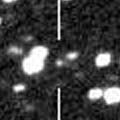
|
In its last apparition, it became brightest about 4 months after the perihelion passage. In this apparition, it was 17.6 mag in late July around the perihelion passage (July 23, Filip Fratev), however, now it brightened up to 15.8 mag (Oct. 27, B. Vasiljevic, R. Palcic). It will be observable at 15.5 mag in good condition from November to January. However, it is reported fainter than this ephemeris recently.
Date(TT) R.A. (2000) Decl. Delta r Elong. m1 Best Time(A, h)
Dec. 9 5 49.11 16 41.7 1.165 2.137 167 15.5 0:40 (180, 38)
Dec. 16 5 42.80 17 11.3 1.185 2.166 173 15.6 0:07 (180, 38)
|

|
Now it is 15.9 mag, as bright as expected (Oct. 25, Ken-ichi Kadota). It is observable at 15.5-16 mag until next spring. But, in the Northern Hemisphere, it locates somewhat low at 20-30 degree high.
Date(TT) R.A. (2000) Decl. Delta r Elong. m1 Best Time(A, h)
Dec. 9 7 34.28 -31 52.7 3.451 3.960 114 15.7 2:25 (180, 87)
Dec. 16 7 19.73 -33 5.3 3.388 3.949 118 15.6 1:43 (180, 88)
|
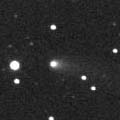
|
It was bright as 13.2 mag on Sept. 27, and visible visually (Seiichi Yoshida). It keeps locating at the same altitude until December. But probably, it is already too faint to see visually.
Date(TT) R.A. (2000) Decl. Delta r Elong. m1 Best Time(A, h)
Dec. 9 22 31.43 -17 50.7 3.568 3.470 76 16.1 20:50 ( 96, 40)
Dec. 16 22 37.43 -16 58.9 3.679 3.485 70 16.3 20:56 ( 93, 34)
|
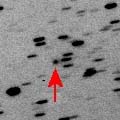
|
Now it is 16.2 mag (Oct. 21, Catalina Sky Survey). A bit fainter than this ephemeris, but it became almost as bright as expected. It keeps 16 mag until December. It keeps observable until February when it becomes fainter than 18 mag.
Date(TT) R.A. (2000) Decl. Delta r Elong. m1 Best Time(A, h)
Dec. 9 10 44.43 -7 53.8 1.490 1.800 90 16.2 2:53 (243, 44)
Dec. 16 10 50.77 -10 18.4 1.456 1.833 95 16.3 2:53 (241, 50)
|
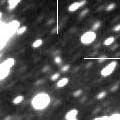
|
It keeps 17 mag for a long time after this until the end of 2007. It will be observable in good condition in 2006 autumn and 2007 autumn.
Date(TT) R.A. (2000) Decl. Delta r Elong. m1 Best Time(A, h)
Dec. 9 20 49.01 34 7.0 3.674 3.607 78 16.9 20:50 (124,-11)
Dec. 16 21 0.58 33 31.3 3.719 3.597 75 16.9 20:56 (121,-14)
|
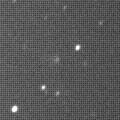
|
It reached up to 16 mag in 2005 summer in the Southern Hemisphere. Now it is 16.6 mag (Sept. 19, Mitsunori Tsumura). The brightening was very slow, and the fading seems also very slow. It will keep 17 mag until January after this. But then it will turn to fade out rapidly, and will be fainter than 18 mag in February.
Date(TT) R.A. (2000) Decl. Delta r Elong. m1 Best Time(A, h)
Dec. 9 5 17.54 -21 51.7 4.294 5.041 135 17.1 0:09 (180, 77)
Dec. 16 5 12.44 -21 7.0 4.332 5.079 135 17.1 23:31 (180, 76)
|

|
It is outside of Jupiter's orbit. So it keeps 17 mag for a long time until 2007 summer. It had been low temporarily, however, it keeps locating high and observable in good condition for a long time after this because it moves in the northern sky.
Date(TT) R.A. (2000) Decl. Delta r Elong. m1 Best Time(A, h)
Dec. 9 14 35.51 37 40.6 7.361 7.077 69 17.1 2:53 (241,-26)
Dec. 16 14 38.85 37 32.7 7.310 7.090 73 17.1 2:53 (239,-22)
|
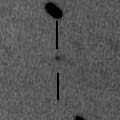
|
Now it is 16.9 mag (Oct. 20, Filip Fratev). The perihelion passage is in 2008. It will be observable for several years after this at around 17 mag. But it may fade out rapidly just after the perihelion passage.
Date(TT) R.A. (2000) Decl. Delta r Elong. m1 Best Time(A, h)
Dec. 9 4 29.96 10 44.4 3.775 4.736 165 17.1 23:17 (180, 44)
Dec. 16 4 25.98 10 52.2 3.788 4.724 159 17.1 22:45 (180, 44)
|
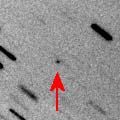
|
Although it was so faint as 20.7 mag on Aug. 2 (P. Birtwhistle), it brightened rapidly as expected, and reached up to 15.7 mag on Nov. 15 (Ken-ichi Kadota). The condition of this apparition is excellent. It keeps 16.5 mag until November. But it will be fainter than 18 mag in December.
Date(TT) R.A. (2000) Decl. Delta r Elong. m1 Best Time(A, h)
Dec. 9 4 55.98 68 5.3 0.666 1.529 134 17.1 23:43 (180,-13)
Dec. 16 4 46.21 69 28.7 0.701 1.552 133 17.5 23:05 (180,-15)
|
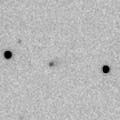
|
It reached to 16 mag in early 2006. It will be fading very slowly from 17 mag to 18 mag until 2007 summer. In the Northern Hemisphere, it keeps locating high.
Date(TT) R.A. (2000) Decl. Delta r Elong. m1 Best Time(A, h)
Dec. 9 13 56.11 30 49.7 5.746 5.483 69 17.2 2:53 (243,-16)
Dec. 16 14 1.31 30 42.7 5.693 5.505 74 17.2 2:53 (241,-12)
|

|
It keeps 17 mag until January. Then it keeps observable util April when it becomes fainter than 18 mag.
Date(TT) R.A. (2000) Decl. Delta r Elong. m1 Best Time(A, h)
Dec. 9 4 18.48 52 23.2 2.958 3.837 149 17.2 23:05 (180, 3)
Dec. 16 4 12.56 52 13.9 2.968 3.833 147 17.2 22:32 (180, 3)
|

|
Not yet observed in this return. The condition in this return is bad. It is only observable in the evening low sky before the perihelion passage. It is best to observe in December when it becomes 17 mag and locates at 20 degree high. It will be getting lower gradually after January. It will be 16 mag in February, but will be lower than 10 degree high.
Date(TT) R.A. (2000) Decl. Delta r Elong. m1 Best Time(A, h)
Dec. 9 21 42.47 -30 56.3 2.198 1.943 62 17.4 20:50 ( 75, 36)
Dec. 16 21 56.17 -28 54.2 2.220 1.903 58 17.3 20:56 ( 75, 32)
|
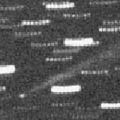
|
New comet with a very short period of 4.6 years. Almost stellar, with a long thin tail. It locates at opposition in November and December. In the Northern Hemisphere, it is observable in excellent condition. It kept 16 mag in November, however, it will fade out very rapidly in December.
Date(TT) R.A. (2000) Decl. Delta r Elong. m1 Best Time(A, h)
Dec. 9 4 5.19 17 35.0 0.804 1.775 165 17.3 22:51 (180, 37)
Dec. 16 3 54.78 16 44.0 0.914 1.857 156 17.9 22:14 (180, 38)
|

|
It is observable in excellent condition at 17.5 mag in December and January. It will be fainer than 18 mag in March.
Date(TT) R.A. (2000) Decl. Delta r Elong. m1 Best Time(A, h)
Dec. 9 6 45.30 28 44.7 1.406 2.341 156 17.4 1:36 (180, 26)
Dec. 16 6 40.67 28 57.3 1.374 2.336 163 17.4 1:04 (180, 26)
|
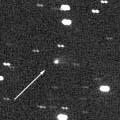
|
It kept 16.5 mag for a year and a half since early 2005. It will start fading after November, and will be fainter than 18 mag at the end of 2006.
Date(TT) R.A. (2000) Decl. Delta r Elong. m1 Best Time(A, h)
Dec. 9 23 35.35 19 53.5 3.828 4.191 104 17.4 20:50 (142, 25)
Dec. 16 23 37.53 18 17.6 3.978 4.231 98 17.6 20:56 (134, 22)
|

|
Peculiar asteroid moving along an orbit like a comet. It was observable in excellent condition at opposition in October, then it reached to 16.5 mag. It will fade out gradually after this, and will be fainter than 18 mag in January.
Date(TT) R.A. (2000) Decl. Delta r Elong. m1 Best Time(A, h)
Dec. 9 1 3.12 -7 22.7 1.555 2.156 114 17.5 20:50 (150, 59)
Dec. 16 1 8.06 -6 54.5 1.608 2.137 108 17.6 20:56 (139, 55)
|
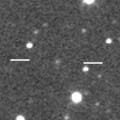
|
Unexpectedly bright as 17 mag on Oct. 16 (Michael Jager and Gerald Rhemann). It is observable at 17.5 mag in good condition until December.
Date(TT) R.A. (2000) Decl. Delta r Elong. m1 Best Time(A, h)
Dec. 9 2 18.86 29 51.3 1.568 2.427 142 17.6 21:06 (180, 25)
Dec. 16 2 17.81 29 45.2 1.628 2.435 136 17.7 20:56 (176, 25)
|

|
It was in major outburst unexpectedly and reached to 10.5 mag in its last appearance in 1999. However, it is faint in this apparition. Now it is 17.4 mag (Nov. 23, Ken-ichi Kadota). It will fade out gradually after this.
Date(TT) R.A. (2000) Decl. Delta r Elong. m1 Best Time(A, h)
Dec. 9 12 53.62 -8 2.3 2.347 2.063 61 17.6 2:53 (267, 19)
Dec. 16 13 4.46 -9 40.5 2.308 2.096 65 17.7 2:53 (266, 23)
|

|
Although it moves very far away from the earth, now it is brightest around the perihelion. It keeps observable in good condition at 18 mag until February.
Date(TT) R.A. (2000) Decl. Delta r Elong. m1 Best Time(A, h)
Dec. 9 5 42.17 19 31.3 2.636 3.610 170 17.7 0:33 (180, 35)
Dec. 16 5 37.20 19 13.4 2.628 3.611 175 17.7 0:01 (180, 36)
|

|
It will be brightening gradually at the high altitude until 2007 spring, while it brightens up to 16 mag. Then it keeps 15.5-16 mag for one year and a half until 2008 summer. However, because the comet moves southwards, it is only observable until 2007 June in the Northern Hemisphere.
Date(TT) R.A. (2000) Decl. Delta r Elong. m1 Best Time(A, h)
Dec. 9 11 8.26 8 2.8 4.303 4.443 91 17.8 2:53 (235, 29)
Dec. 16 11 10.35 7 24.1 4.146 4.394 98 17.7 2:53 (230, 33)
|

|
Now it is fading, and it will be fainter than 18 mag in December.
Date(TT) R.A. (2000) Decl. Delta r Elong. m1 Best Time(A, h)
Dec. 9 23 37.58 24 5.7 1.404 1.933 106 17.7 20:50 (144, 22)
Dec. 16 23 44.32 22 39.0 1.540 1.982 101 18.0 20:56 (138, 19)
|
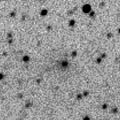
|
Now it is around the aphelion and faintest. But it will be observable at 18 mag in good condition until March. It will be 13-14 mag and visible visually again in 2009. It will reach to 12.5 mag in 2010. But in the Northern Hemisphere, it will locate very low in the south at that time.
Date(TT) R.A. (2000) Decl. Delta r Elong. m1 Best Time(A, h)
Dec. 9 6 13.40 28 9.0 3.774 4.725 163 17.8 1:04 (180, 27)
Dec. 16 6 8.27 28 19.1 3.749 4.723 170 17.8 0:32 (180, 27)
|

|
Now it is 17.9 mag (Oct. 1, Ken-ichi Kadota). It will reach to 15 mag two years later.
Date(TT) R.A. (2000) Decl. Delta r Elong. m1 Best Time(A, h)
Dec. 9 1 55.24 6 30.3 3.749 4.471 132 17.9 20:50 (177, 48)
Dec. 16 1 53.64 6 33.2 3.828 4.464 124 17.9 20:56 (164, 47)
|

|
It reached to 6 mag in 2004. It has already faded down to 17.2 mag (Sept. 27, Ken-ichi Kadota). It will be fading slowly, around 17-18 mag for a while after this.
Date(TT) R.A. (2000) Decl. Delta r Elong. m1 Best Time(A, h)
Dec. 9 2 13.88 -4 46.1 7.798 8.471 130 17.9 21:01 (180, 60)
Dec. 16 2 11.09 -4 41.4 7.945 8.526 123 18.0 20:56 (168, 59)
|
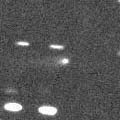
|
Now it is 17.3 mag (Oct. 19, Catalina Sky Survey). It is as bright as last year. It will be fainter than 18 mag in December.
Date(TT) R.A. (2000) Decl. Delta r Elong. m1 Best Time(A, h)
Dec. 9 0 50.17 17 9.7 5.015 5.586 120 17.9 20:50 (159, 35)
Dec. 16 0 45.14 16 33.0 5.152 5.605 112 18.0 20:56 (148, 32)
|

|
It has been lost since its discovery in 1986. The condition is good in this return. In calculation, it was expected to be 14 mag from autumn to winter. But actually, it must be much fainter than expected. Although it has been listed up as an observable target since May, it has not been recovered yet. It was probably in outburst and brightened unexpectedly at the discovery. If it locates within 30 arcmin from the predicted position, it is fainter than 17.5 mag (Nov. 15, Michael Jager).
Date(TT) R.A. (2000) Decl. Delta r Elong. m1 Best Time(A, h)
Dec. 9 21 51.24 -11 21.9 1.414 1.411 69 18.2 20:50 ( 97, 29)
Dec. 16 22 14.04 -9 19.5 1.454 1.423 68 18.3 20:56 ( 97, 25)
|
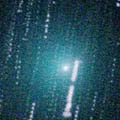
|
Recovered after 117 year blank since 1889. It brightened rapidly in mid July and reached to 8 mag. Then it kept bright at 8 mag with a large diffuse coma until early September. It was still visible visually at 12.2 mag on Oct. 31 (Seiichi Yoshida). However, it faded out rapidly in November. It faded down to 18.1 mag on Nov. 26. In the Northern Hemisphere, it keeps locating very high in the evening sky for a long time after this. However, it is already fainter than 18 mag.
Date(TT) R.A. (2000) Decl. Delta r Elong. m1 Best Time(A, h)
Dec. 9 1 23.56 45 22.3 1.096 1.891 130 18.8 20:50 (173, 9)
Dec. 16 1 37.52 42 4.5 1.202 1.969 128 19.5 20:56 (169, 12)
|
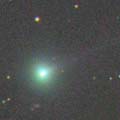
|
New short periodic comet with a period of 5.4 years discovered visually very near by Saturn. It was very bright, 9.4 mag on Oct. 5 (Juan Jose Gonzalez). But it was fainter than 12 mag in the photo on Sept. 30 (Tetuo Kudo). Probably, it brightened rapidly in early October. It faded rather rapidly in October, and faded down to 11.6 mag on Oct. 31 (Seiichi Yoshida). It looked about to be disrupted on Michael Jager and Gerald Rhemann's image. It got diffuse and faded out rapidly in November. It faded down to 17.0 mag on Nov. 24. It is already invisible visually, and difficult to catch even with CCD. It will return to its original feature, a tiny faint NEO, soon. It keeps locating observable until summer. But in the Northern Hemisphere, it becomes low in the south in 2007.
Date(TT) R.A. (2000) Decl. Delta r Elong. m1 Best Time(A, h)
Dec. 9 13 6.34 -21 39.0 1.608 1.305 54 19.3 2:53 (281, 23)
Dec. 16 13 22.93 -24 16.6 1.628 1.364 56 20.6 2:53 (282, 27)
|

|
Recovered after 15 year blank since last apparition in 1991. It was originally expected to brighen up to 14.5 mag in 2006 summer. But actually, it was so faint as 18.8 mag (Sept. 18, Ken-ichi Kadota), fainter than expected by 5 mag.
Date(TT) R.A. (2000) Decl. Delta r Elong. m1 Best Time(A, h)
Dec. 9 2 37.34 58 48.6 1.667 2.470 135 19.5 21:25 (180, -4)
Dec. 16 2 34.04 57 35.5 1.723 2.502 133 19.7 20:56 (180, -3)
|
|
![]()
 C/2006 K3 ( McNaught )
C/2006 K3 ( McNaught ) 76P/West-Kohoutek-Ikemura
76P/West-Kohoutek-Ikemura P/2001 Q2 ( Petriew )
P/2001 Q2 ( Petriew ) 84P/Giclas
84P/Giclas C/2005 EL173 ( LONEOS )
C/2005 EL173 ( LONEOS ) 117P/Helin-Roman-Alu 1
117P/Helin-Roman-Alu 1 114P/Wiseman-Skiff
114P/Wiseman-Skiff C/2006 M1 ( LINEAR )
C/2006 M1 ( LINEAR ) C/2004 L2 ( LINEAR )
C/2004 L2 ( LINEAR ) C/2002 VQ94 ( LINEAR )
C/2002 VQ94 ( LINEAR ) 173P/2005 T1 ( Mueller 5 )
173P/2005 T1 ( Mueller 5 ) 112P/Urata-Niijima
112P/Urata-Niijima C/2004 D1 ( NEAT )
C/2004 D1 ( NEAT ) P/2005 SB216 ( LONEOS )
P/2005 SB216 ( LONEOS ) 106P/Schuster
106P/Schuster P/2006 U1 ( LINEAR )
P/2006 U1 ( LINEAR ) P/2006 U5 ( Christensen )
P/2006 U5 ( Christensen ) C/2005 B1 ( Christensen )
C/2005 B1 ( Christensen ) 2006 QL39
2006 QL39 P/2006 S6 ( Hill )
P/2006 S6 ( Hill ) 52P/Harrington-Abell
52P/Harrington-Abell P/2005 RV25 ( LONEOS-Christensen )
P/2005 RV25 ( LONEOS-Christensen ) C/2006 V1 ( Catalina )
C/2006 V1 ( Catalina ) (3200) Phaethon
(3200) Phaethon 65P/Gunn
65P/Gunn 74P/Smirnova-Chernykh
74P/Smirnova-Chernykh C/2003 K4 ( LINEAR )
C/2003 K4 ( LINEAR ) C/2005 R4 ( LINEAR )
C/2005 R4 ( LINEAR ) D/1986 W1 ( Lovas 2 )
D/1986 W1 ( Lovas 2 ) 177P/2006 M3 ( Barnard 2 )
177P/2006 M3 ( Barnard 2 ) P/2006 T1 ( Levy )
P/2006 T1 ( Levy ) 102P/Shoemaker 1
102P/Shoemaker 1![]()



























